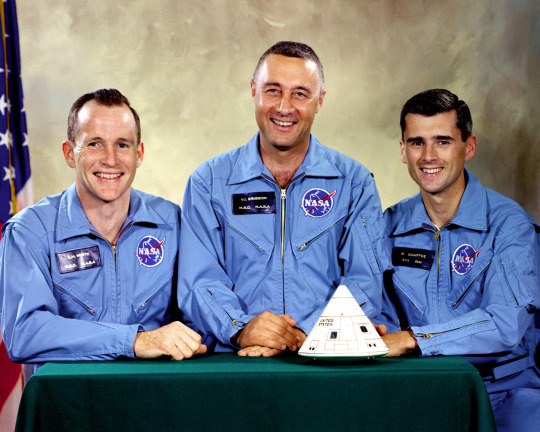spacefrontier
117 posts
"Exploration is really the essence of the human spirit." - Frank Borman
Don't wanna be here? Send us removal request.
Text

Shuttle-C with Space Station Freedom.
Date: 1990s
source
47 notes
·
View notes
Text
BACK TO THE MOON
New footage from @FireflyAerospace shows their lunar lander’s view from approximately 60 miles (100 km) above the Moon. Blue Ghost will land at Mare Crisium, on the near side of the Moon, on March 2, no earlier than 3:34 a.m. EST (0834 UTC). All 10 NASA instruments on this flight are currently healthy and ready to operate on the lunar surface. The data that we collect from these instruments will help us prepare for crewed Artemis missions to the surface of the Moon.
241 notes
·
View notes
Text






"Launch of Friendship 7, the first American manned orbital space flight. Astronaut John Glenn aboard, the Mercury-Atlas rocket is launched from Pad 14."
Date: February 20, 1962
NASA ID: S62-00363, S62-00337, KSC-62PC-0011
source, source
113 notes
·
View notes
Text

Installation of the SSME onboard Space Shuttle Columbia.
Date: February 1980
Posted on the Phoenix Aviation Research Facebook page: link
79 notes
·
View notes
Text



Virgil Ivan “Gus” Grissom (April 3, 1926 – January 27, 1967) Edward Higgins “Ed” White II (November 14, 1930 – January 27, 1967) Roger Bruce Chaffee (February 15, 1935 – January 27, 1967)
The crew of Apollo 1. Ad astra per aspera ❤️
193 notes
·
View notes
Text

TV Camera on the Apollo 17 Lunar Roving Vehicle (LRV-3) in motion.
Yuri Krasilnikov has combined them into a gif.
Date: December 11-13, 1972
NASA ID: AS17-141-21492, 93, 94, and 95
82 notes
·
View notes
Text

"The Hubble Space Telescope (HST) begins its separation from the space shuttle Endeavour following a week and a half of repairs while in the space vehicle's cargo bay."
NASA ID: December 9, 1993
NASA ID: S94-00255
53 notes
·
View notes
Text


"An overall view of the Manned Spacecraft Center's Mission Control Center, during the National Aeronautics and Space Administration's Gemini-7 spaceflight."
Date: December 7, 1965
NASA ID: S65-60037, S65-60039
604 notes
·
View notes
Text
Concept image of potential Space Shuttle design ascending through the sky toward space; Artist: Roy Gjertson; General Dynamics, Convair, NASA
13 notes
·
View notes
Text

Pilot Rick Hauck and Commander Bob Crippen review procedures on the Space Shuttle Challenger flight deck, STS-7
44 notes
·
View notes
Text




STS-2 Columbia on the 747 SCA taxiing after landing at Bergstrom Air Force Base, Austin, Texas.
Photographed by Scott R. Wilson.
Date: November 25, 1981
Posted by Facebook by Scott Wilson: link
81 notes
·
View notes
Photo

2024 November 20
Earthset from Orion Image Credit: NASA, Artemis 1
Explanation: Eight billion people are about to disappear in this snapshot from space taken on 2022 November 21. On the sixth day of the Artemis I mission, their home world is setting behind the Moon’s bright edge as viewed by an external camera on the outbound Orion spacecraft. Orion was headed for a powered flyby that took it to within 130 kilometers of the lunar surface. Velocity gained in the flyby maneuver was used to reach a distant retrograde orbit around the Moon. That orbit is considered distant because it’s another 92,000 kilometers beyond the Moon, and retrograde because the spacecraft orbited in the opposite direction of the Moon’s orbit around planet Earth. Orion entered its distant retrograde orbit on November 25. Swinging around the Moon, Orion reached a maximum distance (just over 400,000 kilometers) from Earth on November 28, exceeding a record set by Apollo 13 for most distant spacecraft designed for human space exploration. The Artemis II mission, carrying 4 astronauts around the moon and back again, is scheduled to launch no earlier than September 2025.
∞ Source: apod.nasa.gov/apod/ap241120.html
69 notes
·
View notes
Text
youtube
Just under two hours until the launch of Shenzhou 19, which will send 3 taikonauts to the Tiangong space station.
8 notes
·
View notes
Text
I started this blog right before the semester began, thinking I could manage to update this regularly, do all of the work required of me by my major, and work a full-time job. Turns out, unsurprisingly, that there was way too much on my plate, so I've sort of taken a hiatus from posting here.
Hopefully in the future I'll have more time to curate and post cool space history stuff here.
5 notes
·
View notes
Text


Astronaut Alan L. Bean, Skylab 3 commander, participates in the final Skylab 3 extravehicular activity (EVA), during which a variety of tasks were performed. Here, Bean is near the Apollo Telescope Mount (ATM) during final film change out for the giant telescope facility. Astronaut Owen K. Garriott, who took the picture, is reflected in Bean's helmet visor. The reflected Earth disk in Bean's visor is so clear that the Red Sea and Nile River area can delineated. September 22, 1973
NASA
114 notes
·
View notes
Text

"This view of the International Space Station, backdropped against a blue and white Earth, was taken shortly after the Space Shuttle Atlantis undocked from the orbital outpost at 7:50 a.m. CDT. The unlinking completed six days, two hours and two minutes of joint operations with the station crew. Atlantis left the station with a new, second pair of 240-foot solar wings, attached to a new 17.5-ton section of truss with batteries, electronics and a giant rotating joint. The new solar arrays eventually will double the station's onboard power when their electrical systems are brought online during the next shuttle flight, planned for launch in December."
Date: September 17, 2006
NASA ID: S115-E-06767
75 notes
·
View notes
